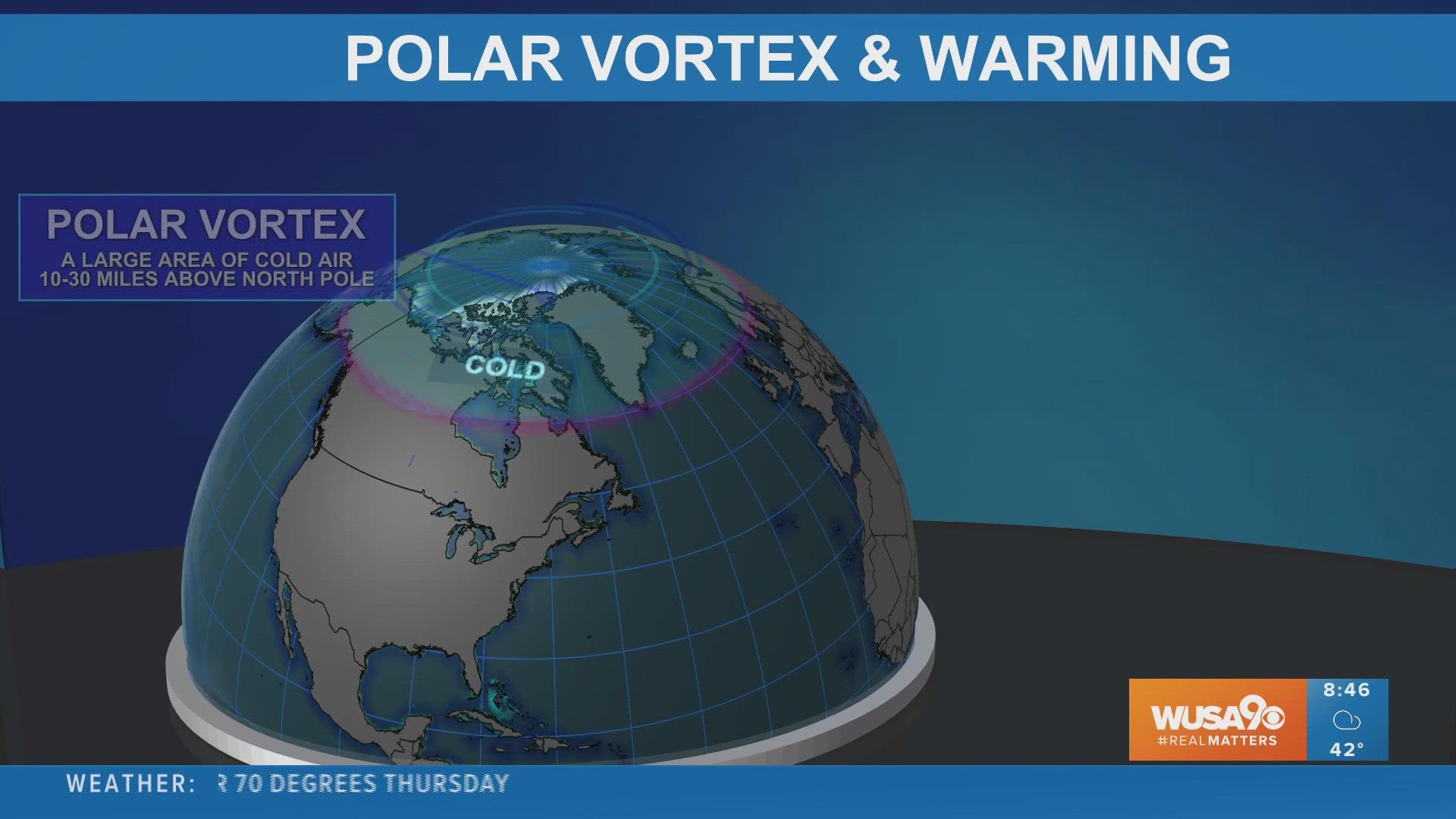WASHINGTON — It's been a mild winter, but a cold air outbreak could show up before winter is over. Polar vortex experts are watching a phenomenon that could throw the vortex off balance and send cold air blasting into the U.S. in the next few weeks, although, it's not a guarantee.
Think of the polar vortex as a pool of very cold air, surrounded by winds circulating around the North Pole. Right above the polar vortex, we have the stratospheric polar vortex, about 10 to 30 miles above the North Pole, essentially the top of the world. It's the warming near the stratospheric polar vortex that could have ripple effects on our weather.
A sudden warming
Here's what's happening. Scientists with the National Oceanic and Atmospheric Association (NOAA) are monitoring a sudden stratospheric warming event or "SSW" event.
These SSW events are caused by disruptions in the stratosphere. Just as there are waves at the beach, there are large atmospheric waves of air on the planet. Those atmospheric waves can crash, just like the ones in the ocean. As they do, they transfer large amounts of energy that can cause warming and alter the circulation around the polar vortex. This could allow cold air that is normally trapped to spill out into the U.S.
According to polar vortex experts Amy Butler of NOAA's Chemical Sciences Laboratory and Laura Ciasto of NOAA's Climate Prediction Center, here's how the SSW event got started.
"A tropospheric planetary wave at the end of January gave the polar vortex a minor bump from below, causing some rapid but modest warming. The event seems to have destabilized the polar vortex enough that a weaker stratospheric wobble a week or so later triggered a full-on disruption and sudden stratospheric warming event.," experts wrote on Climate.gov.
It happens, but the impacts are tricky
Experts said this is the 4th stratospheric warming event in the last six years. The impacts of these events are not always predictable or consistent. Sometimes there is little to no impact and sometimes you get cold air outbreaks. It can sometimes take up to a month or two before we see impacts.
The last cold air outbreaks associated with an SSW event happened in January 2021, January 2019, February 2018, and January 2013. Butler noted that the events happened in different parts of the world at different times.
Usually, the highest impacts of a disrupted polar vortex are felt in the North Atlantic in the eastern U.S. or northern Eurasia according to experts at Climate.gov.
Many factors go into play, but right now experts think that there is a possibility of below-average temperatures coming to the U.S. in less than a month, but it's not a promise.

